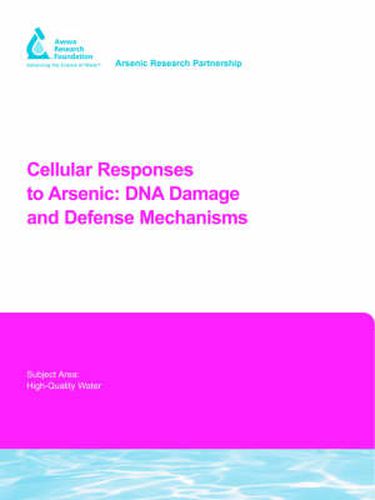Cellular Responses to Arsenic: DNA Damage and Defense Mechanisms
X. Lee,M. Weinfeld

Cellular Responses to Arsenic: DNA Damage and Defense Mechanisms
X. Lee,M. Weinfeld
Although ingestion of high levels of arsenic is believed to cause certain cancers, estimates of cancer risk resulting from exposure to low levels of arsenic are the subject of considerable debate. An improved understanding of arsenic toxicity and the dose-response relationship for relatively low levels of arsenic could improve the risk assessment process. The overall objective of this study was to contribute to a better understanding of arsenic health effects. A specific aim was to investigate the cellular response of exposure to arsenic. This includes the analysis of cells treated with arsenic alone or in combination with other DNA-damaging agents in order to identify mechanisms of DNA damage, the influence of arsenic on DNA repair, and potential critical genes responsible for repair of DNA damage. The researchers conducted the following steps as part of the project approach: 1. Measured cell killing by arsenic compounds, using human and hamster cells harboring mutations in specific DNA repair genes, to determine if arsenic kills cells by causing DNA damage and, if so, which DNA repair pathway(s) would be involved in repairing the damage. 2. Measured cell killing to assess the relationship between ionizing radiation and arsenic, i.e., to define if the combination of the two treatments is additive or synergistic. 3. Conducted assays for DNA damage using capillary electrophoresis laser-induced fluorescence. 4. Monitored the effects of arsenite and benzo[a]pyrene diol epoxide (BPDE) in the induction and repair of BPDE-DNA adducts in A549 cells. 5. Performed arsenic speciation analysis and test species stability. 6. Measured the interaction of arsenicals with metallothionein Project highlights include: Cells from the cancer-prone disorder, Ataxia telangiectasia, were hypersensitive to killing by arsenite, but this may not be due to DNA damage.
The toxicity of the combination of arsenite and gamma-radiation was additive, not synergistic, implying that radiation and arsenic kill cells by distinct mechanisms.
Arsenite enhanced the formation of benzo[a]pyrene-DNA adducts but the kinetics of repair remained unaltered. Arsenite, therefore, either renders DNA more accessible to DNA damaging agents or inhibits other processes that inactivate benzo[a]pyrene metabolites, such as reaction with glutathione.
Trivalent methylation metabolites of arsenic readily reacted with metallothionein, a small cysteine-rich protein. Through this project, analytical techniques were developed for the determination of arsenic species. These techniques are useful for monitoring the occurrence of arsenic. They are also useful for determining exposure and metabolism of arsenic compounds ingested from drinking water. It is also important to recognize that genetic variation may make some individuals more sensitive to the harmful effects of arsenic. Originally published by AwwaRF for its subscribers in 2004.
This publication can also be purchased and downloaded via Pay Per View on Water Intelligence Online - click on the Pay Per View icon below
This item is not currently in-stock. It can be ordered online and is expected to ship in approx 4 weeks
Our stock data is updated periodically, and availability may change throughout the day for in-demand items. Please call the relevant shop for the most current stock information. Prices are subject to change without notice.
Sign in or become a Readings Member to add this title to a wishlist.


